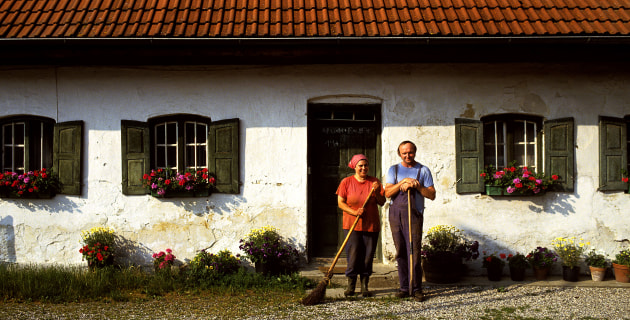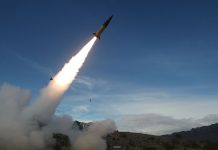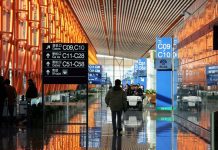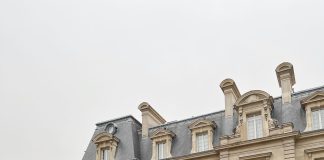By Ian Kenins | 11 May 2022
When it comes to photography, we tend to focus on the things that most interest us, and these are often the subjects we photograph best. In short, it pays to play to your strengths.
This sub-conscious mantra also applies when photographers – amateur and professional – travel overseas. When landscape enthusiasts venture abroad, they invariably end up in a foreign land’s hinterland, while architecture buffs are drawn to cities filled with unique buildings.
I’d already taken several early morning photos of an empty Charles Bridge when in Prague, but I like this shot better for the way locals and backpackers are enjoying the bridge’s beauty on a summer’s evening. Nikon F4. Nikkor 20mm f2.8 lens. 1/250s @ f5.6. Shot on Fujichrome 100 ISO film scanned on a Nikon Super Coolscan 5000ED. Levels, colour correction and sharpening adjusted in Photoshop CS6.
I’ve always been fascinated by people – the way they interact with one another and the environment they happen to be in, their hobbies and professions, and the way they personify their country. And, as hard as I try to capture the beauty of a landscape or the magnificence of a historic city, the results are seldom beautiful or magnificent.
When overseas I look for people who complement a scene that in some way is emblematic of that nation. For example, my admittedly stereotyped view of England is one of old-worldly tradition so during a month-long journey in 2018 I was drawn to its historic villages.
This resulted in many photographs of older people whose dress and demeanour enhanced that stereotype. And older people are often a pleasure to photograph as they have long shed any pretension when a camera is pointed at them.
 What could be more English than two old foremen dressed in heritage uniform on the platform of a picture-perfect vintage railway station in Goathland, Yorkshire? All that was needed was some friendly banter to draw out their character. Fujifilm X-T1 with Fujinon XF18-135mm f3.5-5.6 RLM lens @ 28mm. 1/125th @ f/5.6, ISO 320. Levels and sharpening adjusted in Photoshop CS6.
What could be more English than two old foremen dressed in heritage uniform on the platform of a picture-perfect vintage railway station in Goathland, Yorkshire? All that was needed was some friendly banter to draw out their character. Fujifilm X-T1 with Fujinon XF18-135mm f3.5-5.6 RLM lens @ 28mm. 1/125th @ f/5.6, ISO 320. Levels and sharpening adjusted in Photoshop CS6.
Those old-worldly values has helped keep alive many historic rail lines and vintage trains, and in Yorkshire I stumbled upon the picture-perfect Goathland Railway Station (so perfect it was used as Hogsmeade Station in the first Harry Potter film). On the platform I met two station foremen dressed in heritage uniform. They were great characters only too happy to pose for a photo and their lively personalities and the terrific backdrop resulted in a genuinely English snapshot.
Pubs and taverns have long been a part of England’s social fabric and they, too, offer great photo opportunities. Sometimes it’s the people in them who are the primary focus, other times it’s the venue itself. In a rustic old mill town pub in Saltaire I found two mates having catch up drinks after many years apart.
 Instinct told me these two mates in a rustic old mill town pub in Saltaire, England might be happy to pose for a photo, so we got talking about their connection to the area before I asked for a few snaps. Fujifilm X-T1. Fujinon XF18-135mm lens @ 32mm. 1/40S @ f5.6, ISO 1600.
Instinct told me these two mates in a rustic old mill town pub in Saltaire, England might be happy to pose for a photo, so we got talking about their connection to the area before I asked for a few snaps. Fujifilm X-T1. Fujinon XF18-135mm lens @ 32mm. 1/40S @ f5.6, ISO 1600.
The two men holding pints in a bar with wooden floorboards and relics on display are very working-class Yorkshire. Further south in Lincolnshire, the George of Stamford is, with its stately wine and dining rooms and long list of royal guests, a traditionally upper-class English establishment. So, a wider view, of a patron sipping tea while reading a newspaper, perfectly suited the elegant setting.
The personal touch
When approaching photo-worthy people I always smile and try chatting before asking to take their photo, to help establish some rapport.Now I’m not suggesting you take strangers to the nearest tavern for a few beers and ask about their family history, but a few light-hearted comments about what they’re doing or enquiry about their neighbourhood helps break the ice, and it shows you’re interested in more than just a good photo.
Also, to help sweeten any photo deal, I used to promise sending them a print, and now offer an emailed digital copy.
Photographing English-speaking people is made easier by the absence of any language or cultural differences. The English are a generally polite and agreeable people while I’ve found many Americans see a photo request as a precursor to Andy Warhol’s famous declaration that “ “In the future, everyone will be world-famous for 15 minutes” and so enthusiastically oblige.
 I drank a lot of coffee and ate a lot of apple pie at the Littleton Diner in Vermont to finally win over genial chef David Boyle who let me capture his beaming smile while sweating over a hot stove. Nikon F4, Nikkor 20mm f2.8 lens with Metz 45 CT-5 flash.1/15s @ f4. Shot on Fujichrome 100 ISO film scanned on a Nikon Super Coolscan 5000ED. Levels and colour correction adjusted in Photoshop CS6.
I drank a lot of coffee and ate a lot of apple pie at the Littleton Diner in Vermont to finally win over genial chef David Boyle who let me capture his beaming smile while sweating over a hot stove. Nikon F4, Nikkor 20mm f2.8 lens with Metz 45 CT-5 flash.1/15s @ f4. Shot on Fujichrome 100 ISO film scanned on a Nikon Super Coolscan 5000ED. Levels and colour correction adjusted in Photoshop CS6.
Here’s an example. The Eat Rite in St Louis, Missouri is a classic diner complete with a huge menu board, and the traditional condiments and small glass pie stand on the counter. Here, Louise the waitress would lean and listen while customers told her what was wrong with their boss, the government, or the Cardinals baseball team. It was all so American.
We talked quite a lot over a week of breakfasts until I eventually appeared friendly enough for the reluctant Louise to smile for the camera. In the Littleton Diner in Vermont, I wanted to capture the beaming smile of genial chef David Boyle sweating over a hot stove. I stayed longer and ate more than I should have, but my persistence paid off with a pose full of character.
In non-English speaking countries I hold the camera up, smile quizzically and ask “Photo?” when approaching people in the hope they’ll understand my intention. This often helps, and, with so many camera-carrying tourists throughout the world, I suspect locals almost everywhere have simply become accustomed to being photographed, particularly those engaged in an interesting activity. And monolingual people like me are fortunate that English is taught in many schools throughout the world.
As most people are unaccustomed to having a camera pointed at them, especially by a stranger, I usually start shooting from further away than I’d like so as not to be too invasive. Then, if the subject relaxes, I move a little closer, and then a little closer, until reaching the desired spot.
 This street scene is typical of life in Rome but it’s the human presence that gives the photo some life. Nikon F4, Nikkor 20mm f2.8 lens. 1/30s @ f5.6. Shot on Fujichrome 100 ISO film scanned on a Nikon Super Coolscan 5000ED. Levels, colour correction, perspective and sharpening adjusted in Photoshop CS6.
This street scene is typical of life in Rome but it’s the human presence that gives the photo some life. Nikon F4, Nikkor 20mm f2.8 lens. 1/30s @ f5.6. Shot on Fujichrome 100 ISO film scanned on a Nikon Super Coolscan 5000ED. Levels, colour correction, perspective and sharpening adjusted in Photoshop CS6.
However, another factor to be mindful of is that not everyone going about their daily routine has the time or inclination to be stopped and photographed from different angles and different vantage points and with each composition bracketed several times.
So, when an opportunity presents itself, you need to think quickly: what is the most important element here – the person or his surrounds – what focal length is best suited to what I’m trying to emphasise, and where do I position the subject? It often helps to do all that prior to asking so that when the opportunity arises you don’t test the subject’s patience and end up with a listless stare.
 I had very little time to photograph this amateur gridiron footballer in Harlem, New York, so quickly grabbed the 20mm lens out of my bag and got in close, standing on my toes to accentuate his padded shoulders. With his stars and stripes bandana and statuesque pose, this all-American image is one of my favourite street portraits. Nikon F4, Nikkor 20mm f2.8 lens. 1/500s @ f5.6. Shot on Fujichrome 100 ISO film scanned on a Nikon Super Coolscan 5000ED. Levels and colour correction adjusted in Photoshop CS6.
I had very little time to photograph this amateur gridiron footballer in Harlem, New York, so quickly grabbed the 20mm lens out of my bag and got in close, standing on my toes to accentuate his padded shoulders. With his stars and stripes bandana and statuesque pose, this all-American image is one of my favourite street portraits. Nikon F4, Nikkor 20mm f2.8 lens. 1/500s @ f5.6. Shot on Fujichrome 100 ISO film scanned on a Nikon Super Coolscan 5000ED. Levels and colour correction adjusted in Photoshop CS6.
While strolling through a park in Harlem, New York, an amateur gridiron footballer on his way to training crossed my path. Wearing a stars and stripes bandana and with a powerful physique, here was a potentially wonderful all-American image. “Sure,” he said to my request, “but make it quick. I’m running late.”
I grabbed the 20mm lens out of my bag, got in close and stood on my toes to shoot from above to further accentuate his padded shoulders. Helped by his statuesque pose and the soft autumnal evening light, the photo is one of my favourite street portraits. Which is just as well – the only other frame I shot, from eye level, is simply bland.
In part two next week we’ll look at the gear and posing techniques.
About the author: Ian Kenins has been a professional photographer for over 30 years whose work has been published in a wide variety of books, newspapers and magazines. His favourite photographic subject is people, particularly those from rural areas. And, as this article shows, he’s someone not to travel with. See more at www.iankenins.com













